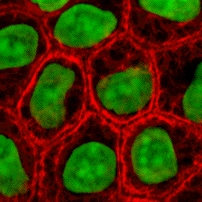 In a Commentary published in
In a Commentary published in
BMC Cell Biology, Joseph Dukes, Paul Whitley
and Andrew Chalmers present a useful guide to the Madin-Darby Canine Kidney
(MDCK) cells, a line that is regarded as a model system for studying protein trafficking,
polarity and junctions in epithelial cells. These cells come in a variety of
different strains and, in spite of their widespread use among cell biologists,
researchers often fail to report in the literature which strain they used, and
sometimes provide inaccurate information, which has made it increasingly
difficult for researchers new to MDCK cells to choose the right strain for
their experiment. In the context of the recent emphasis on cell line
authentication, Dukes and colleagues provide a short guide to the different
MDCK strains available, with a description of their specific properties and
features and a list of suppliers.
You can read the whole Commentary here.
Philippa Harris
Latest posts by Philippa Harris (see all)
- The Tef genome: deciphering one of Ethiopia’s key crops - 14th August 2014
- Why I study malaria: Dr Francis Ndungu on research, working in Kenya and open access - 25th April 2014
- New research sheds light on the development of a rare disease - 28th February 2014
Comments